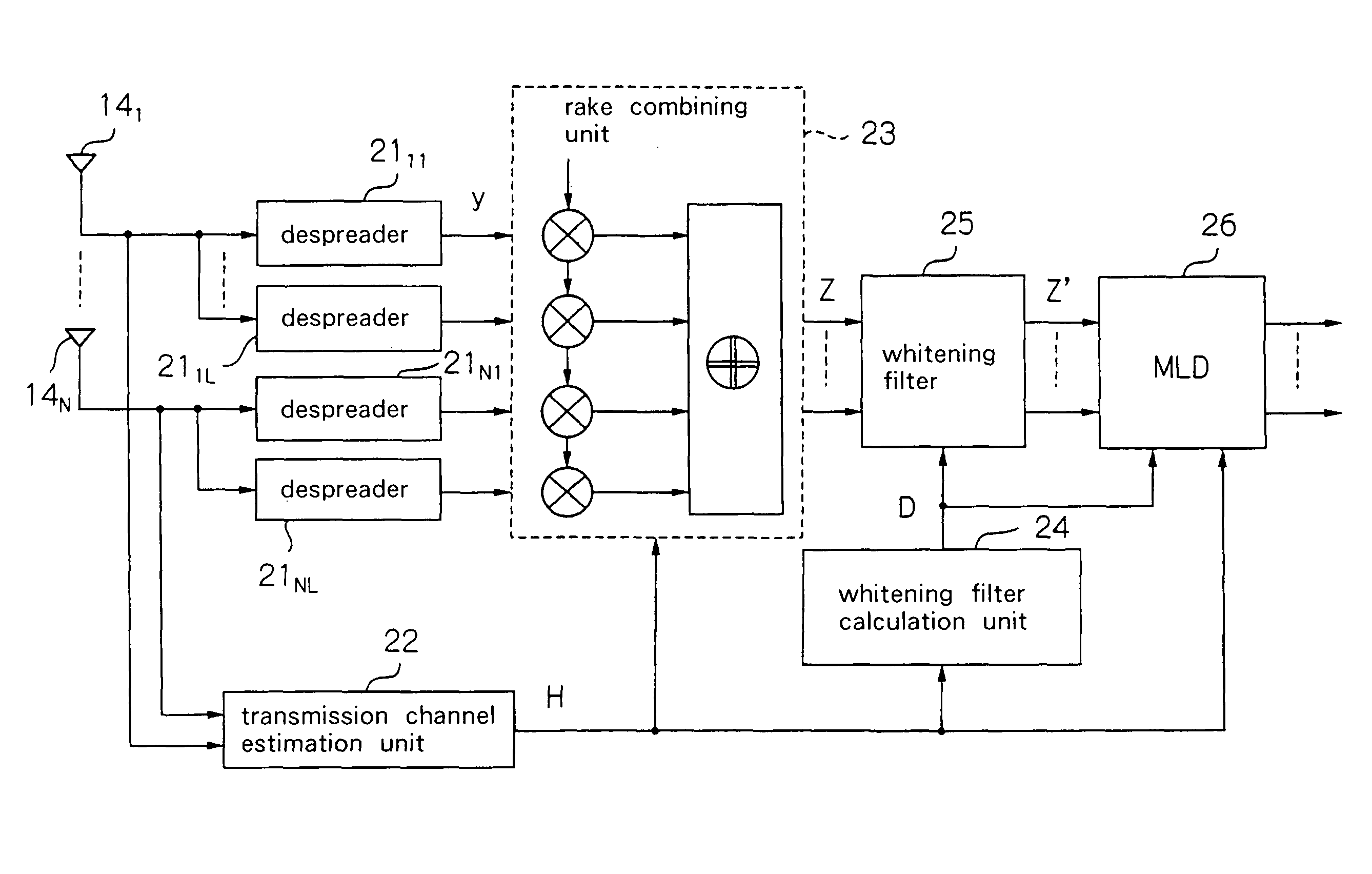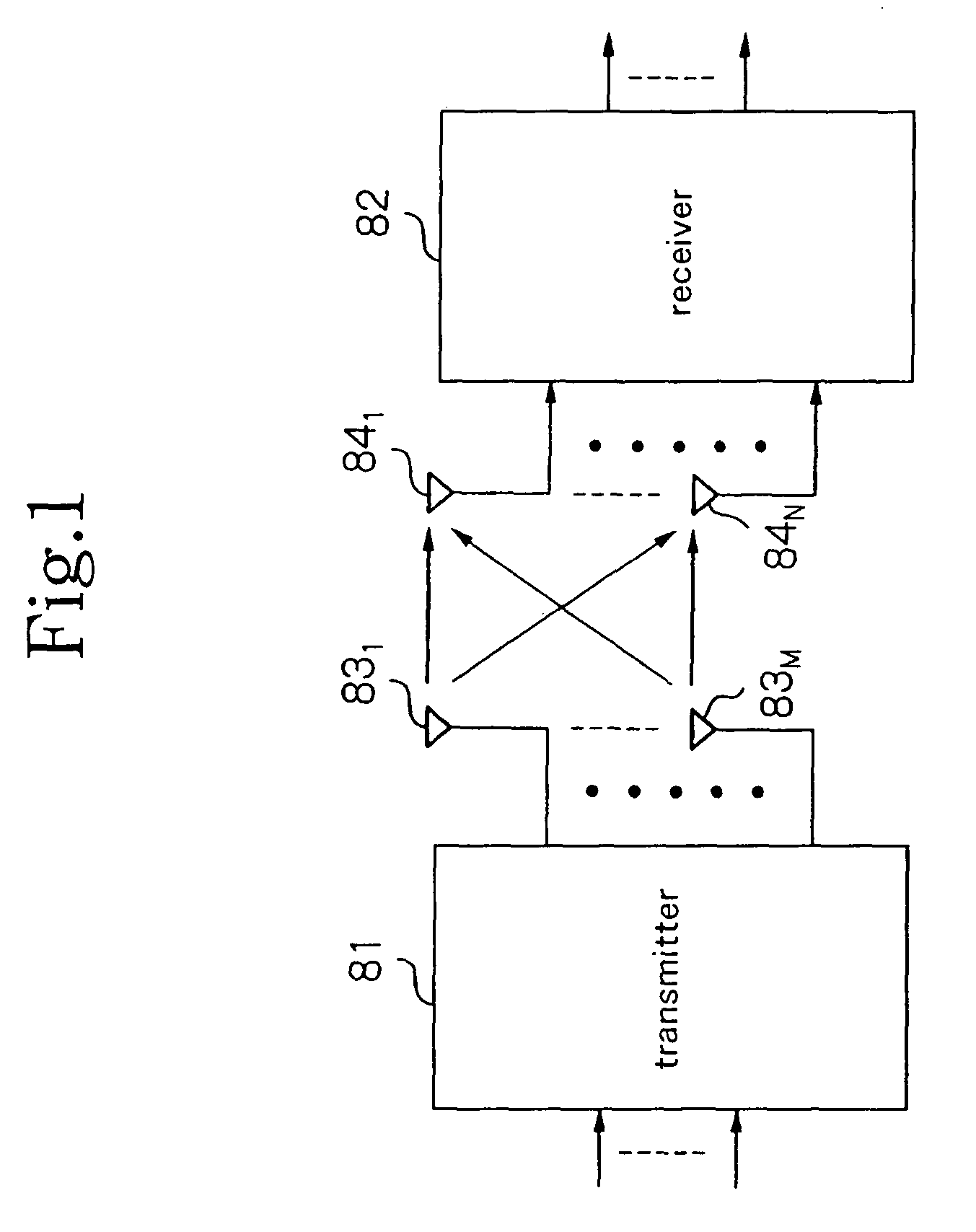Radio communication system that uses a MIMO receiver
a radio communication system and receiver technology, applied in the field of receivers, receiving methods, radio communication systems, etc., can solve the problems of disproportionate addition of error signals, degradation of signal separation characteristics, and exponential increase in computation load, and achieve the effect of superior signal separation characteristics
- Summary
- Abstract
- Description
- Claims
- Application Information
AI Technical Summary
Benefits of technology
Problems solved by technology
Method used
Image
Examples
first embodiment
FIG. 6 is a block diagram showing the configuration of the radio communication system according to the This system uses MIMO (Multiple Input Multiple Output) multiplexing, and in this case, the number of transmission antennas is M (where M is an integer equal to or greater than 1) and the number of reception antennas is N (where N is an integer equal to or greater than 1).
Referring to FIG. 6, the radio communication system includes transmitter 11 and receiver 12. Transmitter 11 includes transmission antennas 131-13M, and receiver 12 includes reception antennas 141-14N.
Transmitter 11 transmits a different signal from each of the plurality of transmission antennas 131-13M at the same frequency and at the same time. Receiver 12 uses the plurality of reception antennas 141-14N to receive the signals that are transmitted from transmitter 11, and demodulates M signals from the received signals by means of a signal separation process.
FIG. 7 is a block diagram showing the configuration of ...
third embodiment
Minimum Means Square Error (MMSE) and Zero Forcing (ZF) are combining methods (equalizing methods) that take into consideration the suppression of multipath interference. In the third embodiment, an example is shown in which MMSE or ZF is used as the method of combining multipaths.
The radio communication system of the third embodiment is of the same configuration as in the first embodiment shown in FIG. 6.
FIG. 11 is a block diagram showing the configuration of the receiver according to the third embodiment. Referring to FIG. 11, receiver 12 according to the third embodiment includes: reception antennas 141-14N, transmission channel estimation unit 22, equalizing weight calculation unit 61, MMSE / ZF equalizer 62, despreaders 631-63M, whitening filter calculation unit 64, whitening filter 65, and MLD unit 66.
Transmission channel estimation unit 22 takes as input the signals that are received at reception antennas 141-14N and uses a known pilot signal that is contained in these received...
fourth embodiment
Explanation next regards the fourth embodiment with reference to the accompanying figures.
In the above-described third embodiment, as an example in which the suppression of multipath interference is considered, a configuration was shown in which the MLD process was performed after implementing equalizing filtering based on the MMSE or ZF method for multipath interference. However, various other examples can also be considered as configurations that take into consideration the suppression of multipath interference. In the fourth embodiment, an example of a configuration is shown in which the results of first demodulating CDMA received signals (primary demodulation) are used to reproduce multipath signals, and signals obtained by eliminating the multipath interference from these multipath signals are then used to perform rake combining and the MLD process.
The radio communication system of the fourth embodiment is of the same configuration as in the first embodiment shown in FIG. 6.
FIG...
PUM
 Login to View More
Login to View More Abstract
Description
Claims
Application Information
 Login to View More
Login to View More - R&D
- Intellectual Property
- Life Sciences
- Materials
- Tech Scout
- Unparalleled Data Quality
- Higher Quality Content
- 60% Fewer Hallucinations
Browse by: Latest US Patents, China's latest patents, Technical Efficacy Thesaurus, Application Domain, Technology Topic, Popular Technical Reports.
© 2025 PatSnap. All rights reserved.Legal|Privacy policy|Modern Slavery Act Transparency Statement|Sitemap|About US| Contact US: help@patsnap.com



